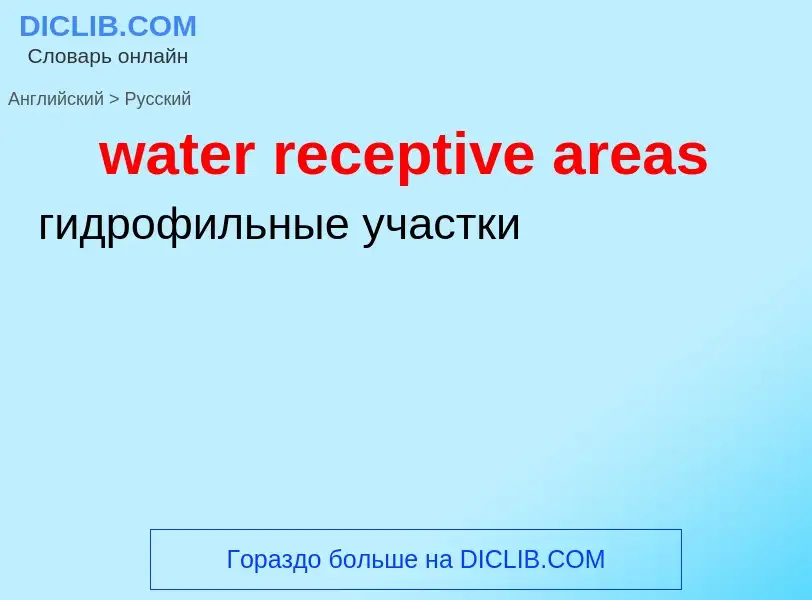Traducción y análisis de palabras por inteligencia artificial
En esta página puede obtener un análisis detallado de una palabra o frase, producido utilizando la mejor tecnología de inteligencia artificial hasta la fecha:
- cómo se usa la palabra
- frecuencia de uso
- se utiliza con más frecuencia en el habla oral o escrita
- opciones de traducción
- ejemplos de uso (varias frases con traducción)
- etimología
water receptive areas - traducción al ruso
общая лексика
рецепторное поле
Definición
Одежда, наряд (обычно женский).
2. м.
1) Приведение в порядок своего внешнего вида, надевание одежды.
2) Столик с зеркалом или зеркалами, за которым накладывают макияж, причесываются и т.п.
3) Помещение для отправления естественных надобностей человека; уборная.
Wikipedia
The receptive field, or sensory space, is a delimited medium where some physiological stimuli can evoke a sensory neuronal response in specific organisms.
Complexity of the receptive field ranges from the unidimensional chemical structure of odorants to the multidimensional spacetime of human visual field, through the bidimensional skin surface, being a receptive field for touch perception. Receptive fields can positively or negatively alter the membrane potential with or without affecting the rate of action potentials.
A sensory space can be dependent of an animal's location. For a particular sound wave traveling in an appropriate transmission medium, by means of sound localization, an auditory space would amount to a reference system that continuously shifts as the animal moves (taking into consideration the space inside the ears as well). Conversely, receptive fields can be largely independent of the animal's location, as in the case of place cells. A sensory space can also map into a particular region on an animal's body. For example, it could be a hair in the cochlea or a piece of skin, retina, or tongue or other part of an animal's body. Receptive fields have been identified for neurons of the auditory system, the somatosensory system, and the visual system.
The term receptive field was first used by Sherrington in 1906 to describe the area of skin from which a scratch reflex could be elicited in a dog. In 1938, Hartline started to apply the term to single neurons, this time from the frog retina.
This concept of receptive fields can be extended further up the nervous system. If many sensory receptors all form synapses with a single cell further up, they collectively form the receptive field of that cell. For example, the receptive field of a ganglion cell in the retina of the eye is composed of input from all of the photoreceptors which synapse with it, and a group of ganglion cells in turn forms the receptive field for a cell in the brain. This process is called convergence.
Receptive fields have been used in modern artificial deep neural networks that work with local operations.




.jpg?width=200)
